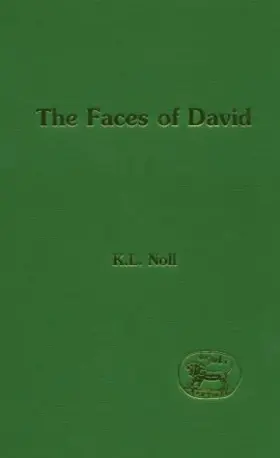

The Faces of David
in Library of Hebrew Bible/Old Testament Studies
Pages
208
Publisher
T&T Clark
Published
5/14/1997
ISBN-13
9781850756590
Reviews
Sheffield: Sheffield Academic Press, 1997. Pp. 204, Cloth, $55.00, ISBN 1850756597. Lyle Eslinger The University of Calgary Calgary, AB Canada T2N 1N4 In The Faces of David, K. L. Noll offers rhetorical analyses of three inset poems in the Samuel narratives (2 Sam 1:19-27; 22:1-51; 23:1-7), along with a brief look at another extended Davidic speech in 2 Samuel 7 (pp. 111-15). These poems have traditionally attracted the attention of source and redaction criticism, which explore their extraneous contextual feel, their possible historical origins, and the redactional logic of their contextualizations in the Bible. Noll aims to supplement such literary history with a detailed investigation of the poems as character rhetoric, part of the comprehensive characterization of David in the books of Samuel. An introductory chapter marks out the place of Noll’s reading in the tradition of narratological analysis of biblical narrative. Here he stakes out a claim for reading long-noted narrative complexities in the books of Samuel in terms of differences between a traditionalist narrator, an unreliable narrator, and a deeper, more searching representation of the author, the implied author expressed in the total narrative work. Use of an unreliable narrator is common enough in modern fiction. It is a comparatively sophisticated narrative strategy and requires an equally sophisticated reader, especially if the indications of narratorial unreliability are not broad and blatant. In Noll’s reading of Samuel they are, it is fair to say, neither. Unsympathetic historical critics are likely to leap for the eisegesis branding iron—too soon, to be sure. Each reading of David’s poetical rhetoric is prefaced by an overview of the narrative context of his utterance, following the standard rhetorical dictum that context is key to rhetorical thrust. Introductory to all three analyses, Noll offers a bird's-eye reprise of the ambiguous David, paragon (narrator’s) and flawed (implied author’s) character, throughout the narrative of his career. Thirty to forty pages are devoted to each of the detailed poetic analyses and the book concludes with a postscript surmising real world authorship, intentionality, and readership. A bibliography, full indices of biblical references and scholars (but, alas, no subject index), conclude the work. Along with J. W.
[Full Review]
